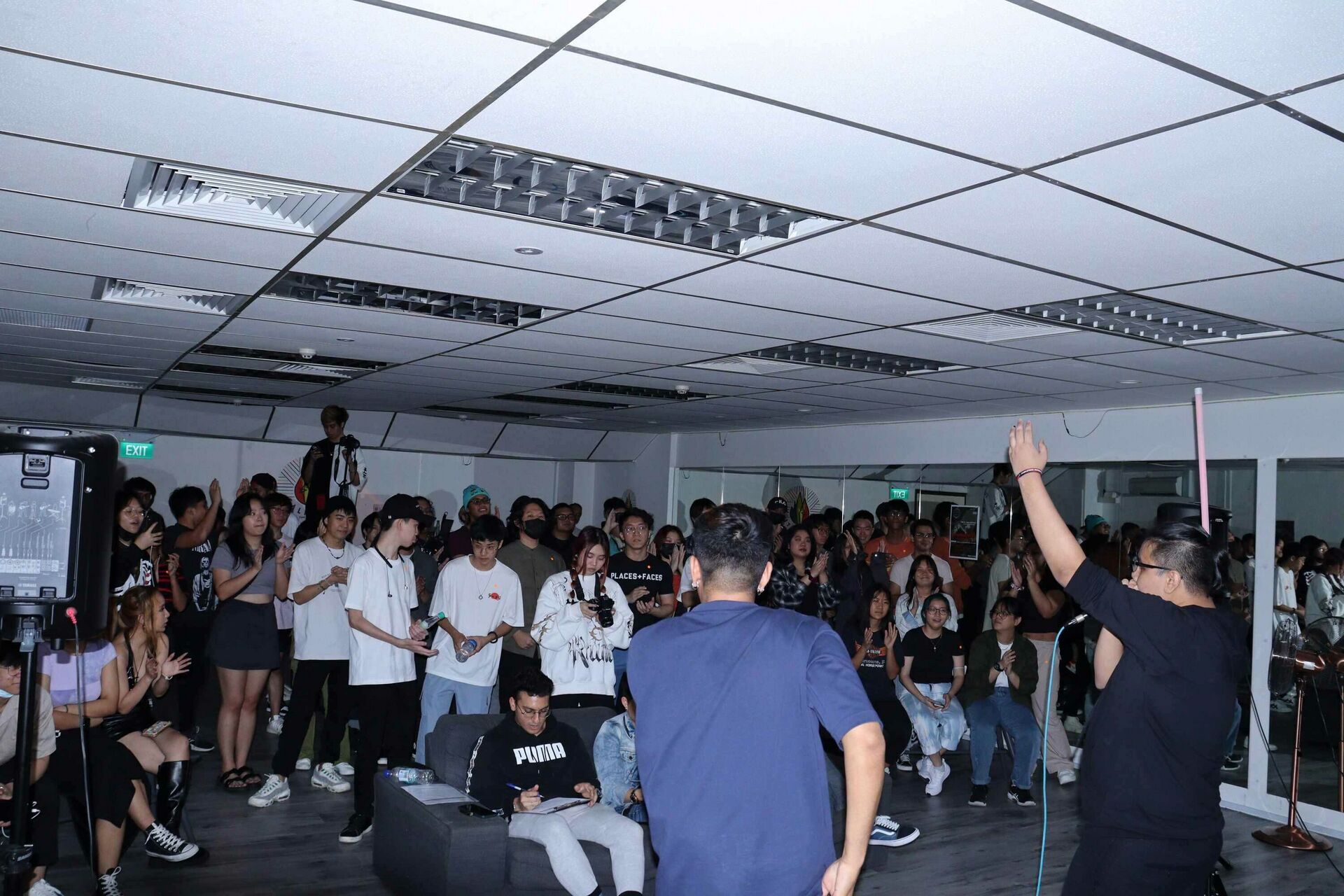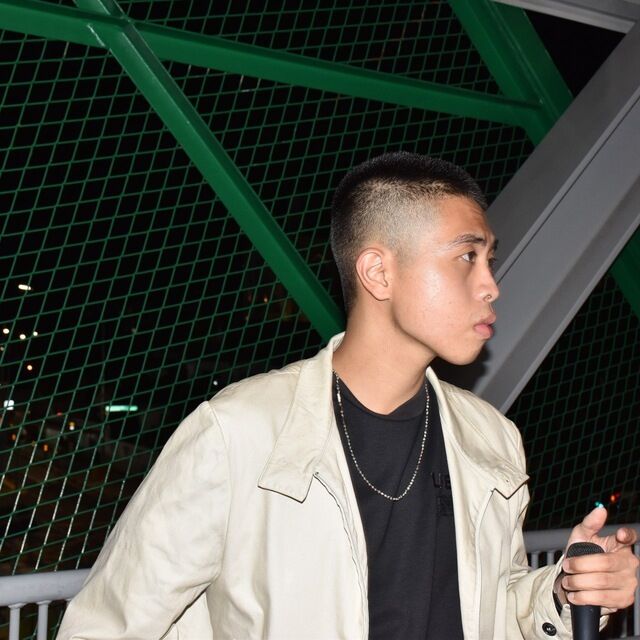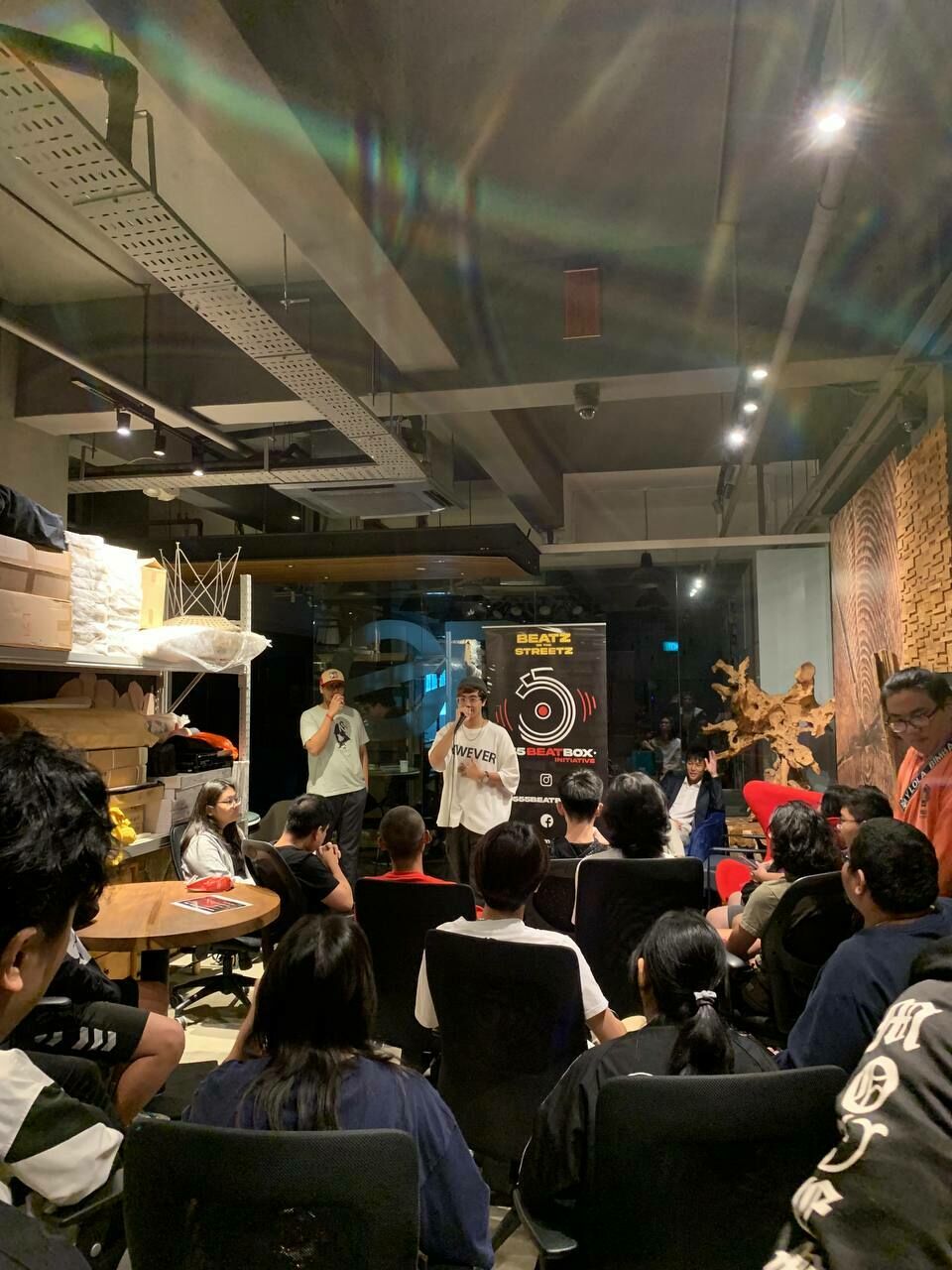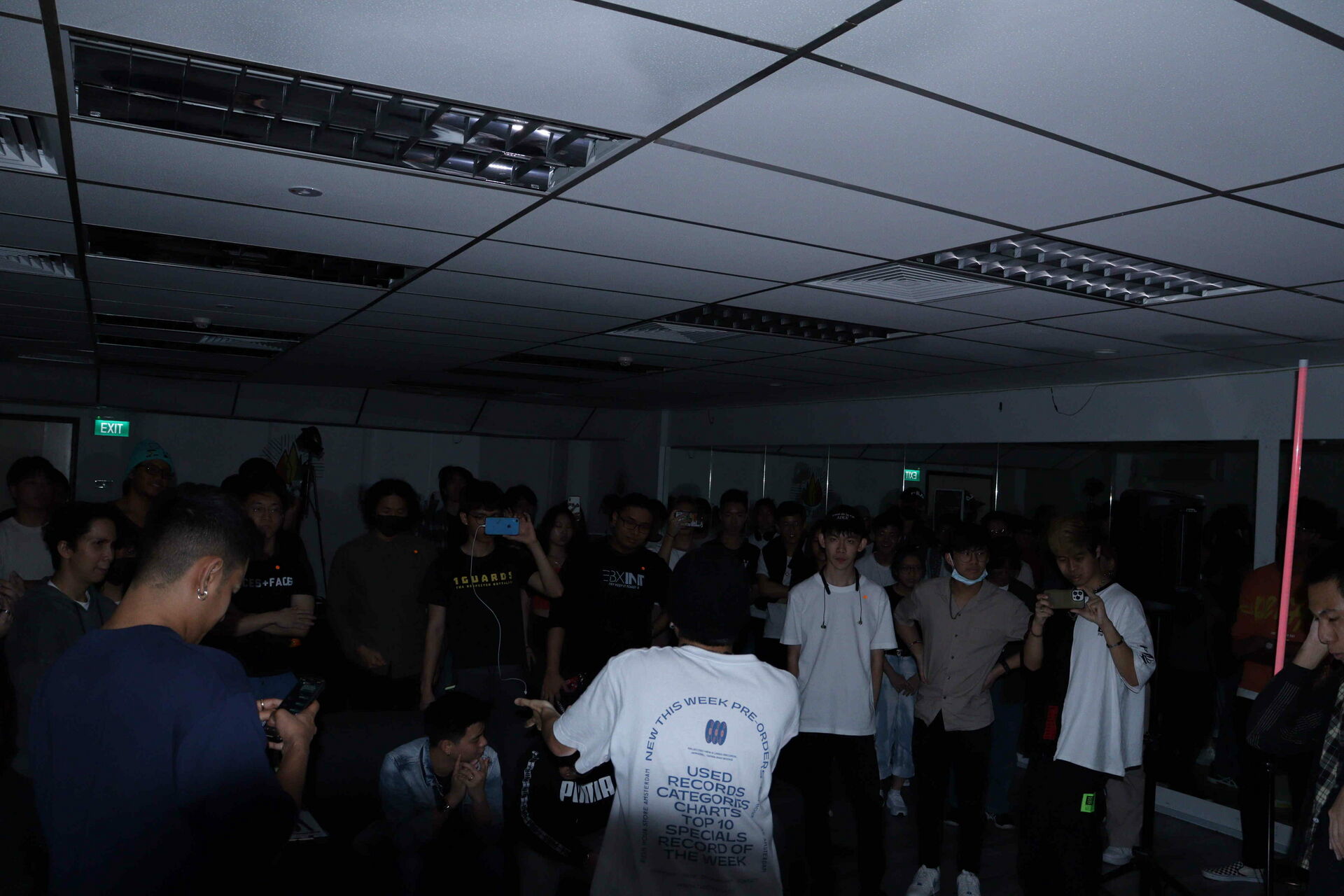The saying that music transforms lives has become a cliché, but there is just no better way to describe the impact that it has had on Singaporean beatboxer Luke Chong.
Back in his teenage years, Chong stepped into the world of beatboxing after encountering the art form through an online video. Since then, he has been venturing deeper into this fascinating new realm without looking back and beautifying it with his own creations.
"The more I improved, the more I fell in love with it. There are endless possibilities for the type of music, sounds, and beats and it’s all just done with our vocal anatomy," said Chong, who co-founded the 555 Beatbox Initiative just four years after that life-altering encounter.
Described by Chong as an "integral part of his life", beatboxing has moulded his character and given him an outlet through which he can freely express himself, the latter of which can be seen in the National Arts Council's (NAC) Tune of Slow Life short film.
Launched in February as part of the NAC's The Arts Can Inspire Your Everyday campaign, the film follows Chong and homegrown instrumental outfit Lorong Boys as they blend beatboxing and classical music during a performance at Singapore's Central Business District. Aside from being a showcase of Chong's talent, the project is also an important step forward in his mission to share his love for beatboxing with others.
In an interview with Hear65, Chong talked about his beatboxing journey, what it was like working on Tune of Slow Life, and the uniqueness of Singapore's beatboxing community.
Hi, Luke! When and how did you fall in love with beatboxing?
I first started at 15 when I saw a video of someone keying in “b-t-k-t” in Google Translate and it came out sounding like beatboxing. I didn’t think beatboxing could be that easy, so I tried it out myself and became more interested in it as a result. It is amazing how easy it actually is to find clear and easy-to-understand tutorial videos online about beatboxing. I watched various tutorials and performance videos online and was always practising.
The more I improved, the more I fell in love with it. There are endless possibilities for the type of music, sounds, and beats and it’s all just done with our vocal anatomy. It was not long before I found like-minded individuals online and this community I found really made me fall in love with the art form even more.
View this post on Instagram
What inspired you to start the 555 Beatbox Initiative and what did you hope to achieve with it?
I started 555 Beatbox Initiative when I was 19 years old. Before that, during my polytechnic years, people approached me to ask for private beatboxing lessons and the number of students that I had kept growing. So I asked a few of my beatboxing friends if they were interested in opening a beatbox initiative with me and the rest is history. Beatboxing is still quite a niche [art form] in Singapore. With 555 Beatbox, we hope that we will be able to grow our appreciation for the art form.
After the pandemic, we started hosting tournaments and events for the community to come together and celebrate the art form. Essentially, at 555 Beatbox, we aim to provide a platform and growth opportunities to our rising beatboxing artists.

"Beatboxing is still quite a niche [art form] in Singapore. With 555 Beatbox, we hope that we will be able to grow our appreciation for the art form."
You’ve mentioned that beatboxing can help to “shape an individual’s discipline, passion, and creativity”. Could you share some of the ways in which beatboxing has impacted your life over the years?
Beatboxing has had a profound and transformative impact on my life. Through the art form, I've learned the value of discipline and perseverance and how that contributes to personal growth and development. Learning new beatboxing techniques requires consistent and dedicated practice, as the more I practised, the more I realized the importance of putting in the effort to improve. I make it a point to use periods throughout the day like walking to school, showering, or even while taking breaks in between work to expand and improve my beatboxing. This process has taught me to approach challenges with determination and grit — traits that have helped me not only in beatboxing but also in other areas of my life.
Beatboxing is more than just an art form to me; it's a means of self-expression and a way to tap into my creative energy. With beatboxing, I have the freedom to explore and create unique sounds and rhythms that are uniquely my own. This has allowed me to discover and express my individuality, as well as challenge myself to continually push the boundaries of what's possible.

"Beatboxing is more than just an art form to me; it's a means of self-expression and a way to tap into my creative energy."
Beatboxing has become an integral part of who I am, allowing me to connect with others who share the same passion and drive to express themselves through music.
Music aside, creating my beatbox tracks has really helped develop the skill of exploring new and exciting ideas, which [in turn] has helped me a lot in my daily life, such as work and school.
Finally, beatboxing has instilled in me a deep passion for music and the power of sound. I've learned to appreciate the nuances and intricacies of music and how small variations in sound and rhythm can convey different emotions and ideas. Through beatboxing, I've developed a heightened sense of musicality, which has opened new avenues for creativity and self-expression. Whether I'm performing live or just practising in my room, beatboxing has become a way for me to connect with myself and others and express my deepest emotions and feelings through the power of sound.
View this post on Instagram
What are some misconceptions about beatboxing that you’ve come across during your journey?
Some common misconceptions about beatboxing I've come across during my journey include the belief that it's an incredibly difficult and impossible skill to master. However, the truth is that humans constantly make and mimic sounds and noises, and as children, we are fascinated by the different sounds we can produce. Beatboxing is simply an extension of this natural ability to create sounds using our mouth and vocal cords.
Furthermore, beatboxing is not only easy but also accessible to anyone. All you need is a mouth and a sense of flow and rhythm. In fact, beatboxing techniques have already existed in other forms of culture, such as Mongolian throat singing, yodelling, or even African click language, proving that this art form has been a part of human expression for centuries. I believe that dispelling these misconceptions is essential in breaking down the barriers to entry for beatboxing and allowing more people to discover and explore this art form. Beatboxing is a unique and expressive way to connect with others and showcase one's individuality. It can also serve as a powerful tool for self-expression and creativity as well as a means to build confidence and self-esteem.

"Beatboxing is not only easy but also accessible to anyone. All you need is a mouth and a sense of flow and rhythm."
Let’s talk about Tune of Slow Life, a short film that you did as part of the NAC’s The Arts Can Inspire Your Everyday campaign. How did you come up with its concept?
Creative agency BLKJ Havas reached out to me in 2022 to share the creative concept for the short film and offer an opportunity to collaborate and co-create a cross-genre music performance. They shared that this was a meaningful campaign commissioned by the National Arts Council (NAC) to show how the artist can turn ordinary moments into extraordinary experiences.
When I read that it was to mix beatboxing with classical music, I was surprised because I had not thought about this combination before. I was very intrigued. I really appreciated that it was an opportunity that would take me out of my comfort zone. I even asked my friends for advice on how to create a track to complement the classical score because my beats are usually of a higher tempo. I had to slow it down to a more hip-hop style for this track.
What I enjoyed about this was the collaborative process with the Lorong Boys. Even though there is an age gap and they’re classically trained while I am self-taught, we were able to connect and understand each other through music. They were very receptive to my suggestions about the song choice and arrangement, which made the creative process very enjoyable.
To me, the arts are found everywhere. They inspire my everyday life in various avenues — the way I dress, the way I present myself, and the way I appreciate the different designs and art in my surroundings. [It] doesn’t mean [that just because] we live in a busy Singapore, [we do] not get inspired by the arts every day. Sometimes we need to just take a break and slow down.
"To me, the arts are found everywhere. They inspire my everyday life in various avenues — the way I dress, the way I present myself, and the way I appreciate the different designs and art in my surroundings."
What was the reception to Tune of Slow Life like? How did it encourage you as an artist?
On the day itself, it was very encouraging to see people slow down or even stop to listen to our performance. I was able to feed off their energy and it helped me put on a better performance with the Lorong Boys. We tried different songs in various genres, and we really vibed with each other immediately. It made me feel like a true musician.
Since the film was launched on NAC’s website and social media, a lot of my friends have also shown support by sharing the film on their social media [platforms], which I’m very grateful for. People have also been coming up to me at my workplace to ask if I was the one in the video and they have told me they found the concept very interesting. This made me realize that the effort and hours we put into this project were all worth it.
The feedback and reactions to the film boosted my outlook on beatboxing in Singapore. With this film, more people have been introduced to beatboxing and how it can meld with an almost opposite genre like classical music.

Could you tell us what the local beatboxing community is like? What do you think makes it unique from others around the world?
The local beatboxing community is very diverse and is growing. We hold weekly beatboxing classes at 555 Beatbox and we’ve seen people of all ages signing up — from as young as four to adults in their 40s and 50s. The local beatboxing community here is vibrant and engaging, with a strong focus on education and character growth. It's not just about learning how to beatbox, but also about using beatboxing to develop important skills like discipline, perseverance, and creativity. This emphasis on personal growth sets our community apart from others around the world.
Another unique aspect of our community is how welcoming and inclusive it is. Whether you're a seasoned beatboxer or a complete beginner, you'll find a safe space to learn and grow among like-minded individuals. It's a place where you can connect with others who share your passion for beatboxing and develop valuable connections that can benefit you both personally and professionally.

"The local beatboxing community here is vibrant and engaging, with a strong focus on education and character growth."
In addition, our community is highly active, with regular events, workshops, and performances taking place throughout the year. These events provide opportunities for beatboxers to showcase their skills and connect with others in the community, fostering a sense of camaraderie and shared purpose. Overall, the local beatboxing community here is a truly special and unique group to be a part of.
We have a slogan: We are rising 555. It is to represent our ever-growing community and our ever-rising spirit. Whenever you go to a beatboxing event or any performance in Singapore with a hint of beatboxing, you will find our ever-supportive beatboxers in the crowd. If anyone shouts “We are rising!”, you can expect them to echo with “555!”.
What more do you think can be done to support this community?
Having the opportunity to be a part of The Arts Can Inspire Your Everyday [campaign] is a huge stepping stone for the beatboxing community. Beatboxing is not mainstream, yet such opportunities cast a spotlight on us and we hope this will help grow interest and appreciation of the craft.
[One way to support the community] would be to provide us with a platform to share our music. In my own time, I busk at Orchard Road and Clarke Quay. But going beyond that, commission us for classes and performances! Share our music with your friends or on social media! If we had a larger stage to perform on or more publicity towards our initiatives, I feel that it would be a huge boost for our community.
Other than that, dare to learn! No one in the community grew up knowing that they would fall in love with this art form, but it is easier than you think. There are countless tutorials online to learn [from], [so] all you have to do is try. The more beatboxers there are, the larger our community’s presence on this small island.
This interview has been edited for brevity and clarity.



